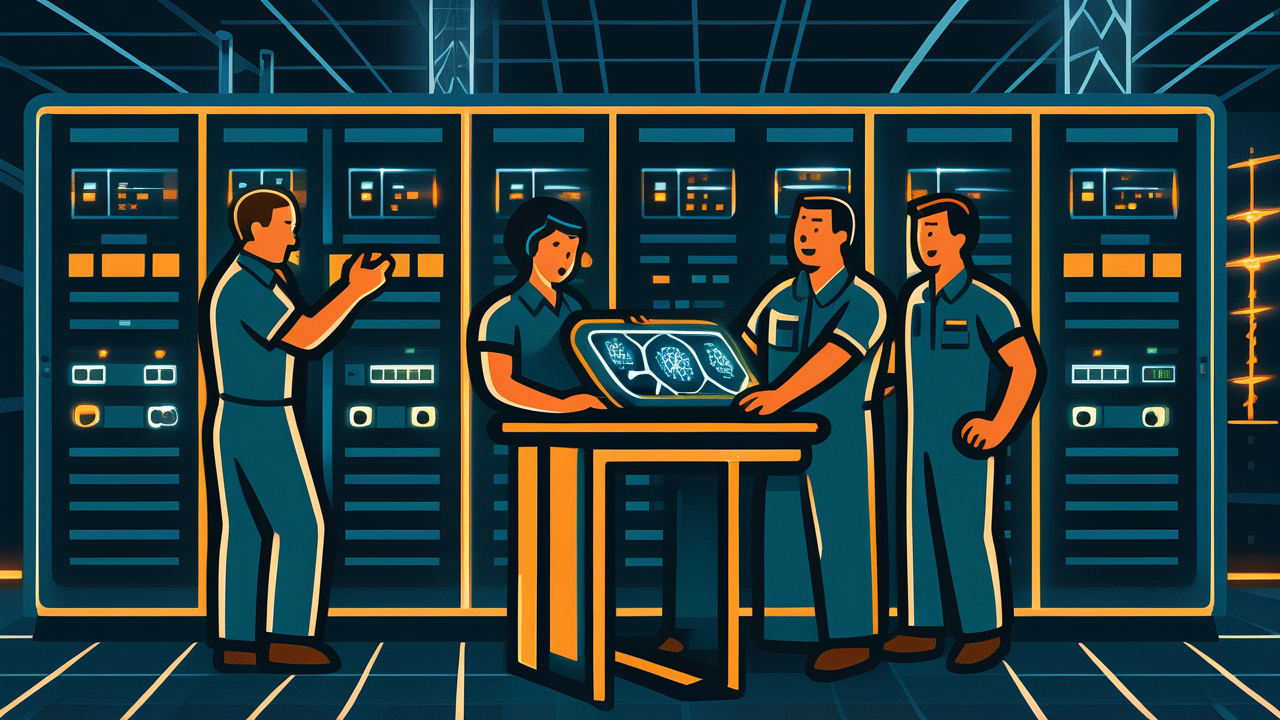[Disclaimer] This article is reconstructed based on information from external sources. Please verify the original source before referring to this content.
News Summary
The following content was published online. A translated summary is presented below. See the source for details.
A Washington D.C. startup called Emerald AI is developing innovative solutions to address a critical problem facing the tech industry: the massive power demands of AI data centers. In many parts of the United States, including major technology hubs, new AI facilities face years-long delays because the electrical grid cannot supply enough power. These facilities, known as AI factories, require enormous amounts of electricity to run the powerful computers that train and operate artificial intelligence systems. Emerald AI’s solution involves creating flexible power management systems that allow data centers to adjust their energy consumption based on grid availability. This breakthrough could enable the rapid deployment of next-generation data centers without waiting for costly infrastructure upgrades. The technology is particularly important as demand for AI computing power continues to skyrocket, with companies competing to build larger and more powerful AI systems.
Source: NVIDIA Blog
Our Commentary
Background and Context

To understand why this is such a big deal, we need to know how much electricity AI data centers use. A single AI training facility can consume as much power as a small city – we’re talking about tens of megawatts, enough to power thousands of homes. The electrical grid in most areas wasn’t designed for this kind of concentrated power demand. When everyone turns on their air conditioners on a hot day, the grid gets stressed. Now imagine adding several facilities that each use as much power as entire neighborhoods. This has created a bottleneck where companies want to build AI facilities but literally can’t get enough electricity to run them. The traditional solution – building new power plants and transmission lines – takes years and costs billions of dollars.
Expert Analysis
Emerald AI’s approach is clever because it works with the existing grid rather than requiring massive new infrastructure. Their flexible power management system allows data centers to reduce their power consumption during peak demand times, similar to how your phone can switch to low-power mode. For example, during a hot afternoon when everyone’s using air conditioning, the AI facility could temporarily slow down non-urgent computations. Then at night, when demand is lower, it could ramp back up to full power. This flexibility helps prevent blackouts and makes better use of renewable energy sources like solar and wind, which produce power at varying times. Energy experts call this “demand response,” and it could revolutionize how we think about industrial power use.
Additional Data and Fact Reinforcement
The numbers behind this issue are staggering. By 2030, data centers are projected to consume 8% of all electricity in the United States, up from 2% today. A single large AI training run can use as much electricity as 1,000 homes use in a year. Currently, there are over 2,500 data centers in the U.S., with hundreds more planned. In Virginia alone, data centers already consume 25% of the state’s electricity. Wait times for new electrical connections in tech hubs can exceed 5 years, creating a major obstacle for AI development. Studies show that flexible power management could reduce peak demand by up to 40%, potentially saving billions in infrastructure costs while accelerating AI deployment.
Related News
This development comes as tech companies are exploring various solutions to the power problem. Microsoft recently announced plans to restart a nuclear reactor to power its data centers. Google has invested heavily in renewable energy projects specifically for their facilities. Amazon is experimenting with fuel cells and battery storage systems. Some companies are even considering building data centers in colder climates to reduce cooling costs. Tesla has proposed using their large-scale battery systems to help data centers manage power fluctuations. Meanwhile, governments are beginning to recognize the issue, with several states offering incentives for energy-efficient data center designs.
Summary

Emerald AI’s flexible power management technology represents a practical solution to one of the biggest challenges facing the AI industry. By allowing data centers to dynamically adjust their power consumption, this innovation could accelerate AI development while helping stabilize the electrical grid. This is especially important for young people, as AI technology will play an increasingly large role in education, careers, and daily life. The success of such solutions will determine how quickly AI advances can be deployed and made available to everyone. As we move toward a more AI-powered future, innovations like this ensure that progress doesn’t come at the cost of reliable electricity for homes and schools.
Public Reaction
The announcement has sparked debate about energy priorities. Environmental groups have praised the focus on efficiency and grid flexibility, seeing it as a better alternative to simply building more power plants. Local communities near proposed data centers have expressed both excitement about tech jobs and concern about power availability. Utility companies have shown strong interest in the technology, as it could help them manage growing demand without massive infrastructure investments. Some critics worry about AI facilities getting priority access to power during shortages.
Frequently Asked Questions
Why do AI data centers use so much power? AI computers use specialized chips that require lots of electricity to perform trillions of calculations per second. They also need massive cooling systems to prevent overheating.
How does flexible power use help? By reducing power during peak times (like hot afternoons), data centers help prevent blackouts and can use cheaper electricity during off-peak hours.
Will this affect internet services? No, this technology is designed to manage power without disrupting services. Critical operations continue normally while less urgent tasks are temporarily slowed.


